

Reviews
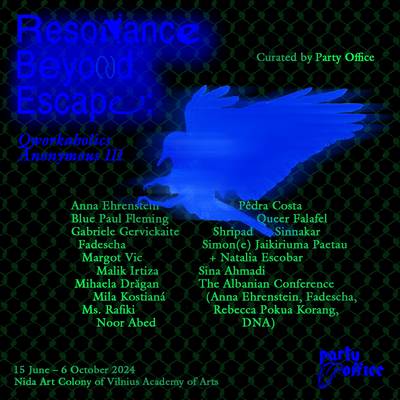

The experiences narrated in the exhibition seek to reshape these power dynamics and effect a decolonization from a Western anthropological gaze that is as exhausting and draining as any other toxic work environment. But is this comparison even adequate given that the Qworkaholics’ relationship with the outside world is suffused with oppression and social mistreatment at the most basic (desire, instinct, sensibility) level? How can these relationships be reshaped if burnout is at the very core of one’s existence, not just a part of it?
READAnarchitecture of Desire: A Review of Resonance Beyond Escape – Qworkaholics Anonymous III
Qworkaholics are victims of various colonial systems of power whose “primary occupation” is the struggle for survival in the present-day world, which systematically is “othering” them, subjecting their bodies, identities and affects to daily violence and oppression. Can the mundane drudgery of Western consumer culture that is oppressive and exploitative as the colonial systems be challenged through visual and physical forms that reflect the actual choreography of living and sensing?


How will Flow Festival respond to criticisms about its relationships with its free workforce, security contractors, Helsinki Police and its Zionist holding company? Will it align with or distance itself from the actions and affiliations of its financial backers?
READFlow Festival: A Retrospective
Billion-euro changes in Flow Festival’s ownership signal a strong intent to continue commercializing. The Flow Festival, the locals once cherished, has been hollowed out by business interests and now emits the stench of globalist capital.


The extent of ongoing and increasing repression of artistic freedom in Germany had caught some of the visitors by surprise. With each story of censorship brought to ABSENCED, Germany’s otherwise strong frameworks for expressing political opinions and artistic creativity got called out. Moreover, with a minimum or no interference from the curator as well as the library staff in the choice of works sent in by the artists, ABSENCED created a platform for artists to freely articulate themselves and their rights to ultimate freedom of expression.
READThis High Ground of Neutrality: A Review of the ABSENCED Exhibition at Malmö City Library
Amid cascading censorship incidents of pro-Palestinian voices in Germany, especially since October 7th, Malmö City Library hosted an exhibition featuring artists and works that have been subject to ‘cultural cancellation’ by various German institutions. The southern Swedish municipality, however, in deciding to host this performative exhibition, non-deliberately also highlighted the contradictions in its armlängds avstånd (‘an arm’s length distance’) principle, a cherished tenet of Sweden’s cultural policies.
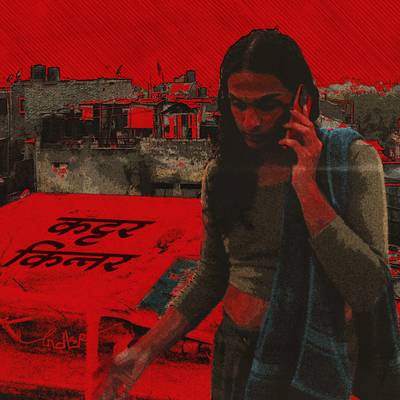

Kinari’s music is a radical sonic collision between her life in Delhi’s Khirki Extension in her lyrics and an intentional and intelligent reckoning with her Tamizh cultural and musical heritage through her use of parai drum beats, and gaan-inspired compositions. It is a raw and unflinching exploration of her life and is unapologetically transgressive. By blending streetwise lyrics with traditional rhythms, she creates a sound that is both familiar and revolutionary.
READA Debut of Power, Politics, and Possibility: Reviewing Kinari’s full-length album ‘KATTAR KINNAR’
Transgender rapper and 2024 Toto Music Awardee Kinari’s debut album, KATTAR KINNAR, is a defiant proclamation of identity that challenges societal norms and inspires a new generation of artists. Launched at Mujrevali Madhuri with an opening mujra performance by acclaimed trans dancer Khushi Shaikh, the album is a sonic revolution. A deep dive into Kinari’s work reveals an artist who defies expectations and commands attention. Can her fearless lyrics and innovative sound redefine the boundaries of Indian hip-hop?
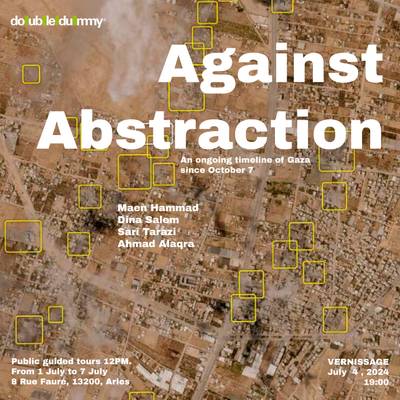

An activation by Palestinian artists Maen Hammad, Dina Salem, Sari Tarazi, and Ahmad Alaqra was hosted at DoubleDummy, Arles, between July 1-7, 2024, during the opening week of the Rencontres d’Arles. It conveys a timeline of the ongoing genocide in Gaza using information shared via alternative messaging platforms like Telegram.
READRadical Re-imagining of Visual Order Amid the Ongoing Genocide of Palestinians: A Review of ‘Against Abstraction’
An activation by Palestinian artists Maen Hammad, Dina Salem, Sari Tarazi, and Ahmad Alaqra was hosted at DoubleDummy, Arles, between July 1-7, 2024, during the opening week of the Rencontres d’Arles. It conveys a timeline of the ongoing genocide in Gaza using information shared via alternative messaging platforms like Telegram.


“Home” and “belonging” are peaceful, positive keywords that can cover up issues related to much less pleasant things, such as nationalism, racism, exclusion, housing commodification, power and control.
READHome Without Journey: A Review of Kiasma’s ‘Feels Like Home’ & Artsi’s ‘My Home Somewhere’
Given that concepts like ‘home’ and ‘belonging’ are used so frequently, is it still possible to do something new and impactful with them? And, if that is possible, what conditions would allow such categories to be revitalised through contemporary art and have an effect?
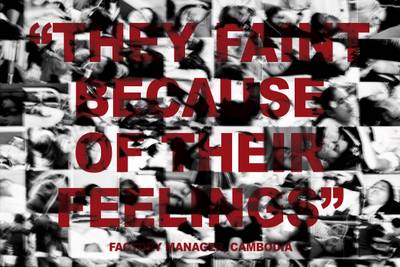

If the problems that individuals face in their personal lives are rooted in systemic issues, then it is unrealistic to expect them to find lasting solutions solely through individual self-improvement efforts. Individual change is not simply a matter of personal effort but is also shaped by the broader social conditions that individuals find themselves in. Abril’s work highlights this hypocrisy of the oppressor in a perverted patriarchal society in which women are blamed and ridiculed for showing symptoms of distress—Mass Hysteria.
READOur Bodies Protest on Our Behalf: A Review of ‘Laia Abril – On Mass Hysteria’
Laia Abril’s work On Mass Hysteria at The Festival of Political Photography challenges the focus on individual diagnosis, prompting the question, can photography be a tool for social diagnosis and change?


To me, Ikeda’s work represents a historic precipice, a zone beyond which artistic practice becomes increasingly processual and concentrated on its world-building, entangled within its own encoded data logic. Beyond this, any mode of output as exhibitable objects within exhibition spaces simply becomes representative of the work and not the work itself. The work then lies in the audience’s or participants’ willing entanglement within the intricate network of the artist’s densely populated research space.
READProcessual (re)presentations of ‘knowing’ without beginning(s) nor end(ings)
Can an artwork manifest itself through the audience’s or participants’ willing entanglement within the intricate network of an artist’s densely populated research space? Exploring process-based, or database-centred archival modes of knowing and commoning, through the Ryoji Ikeda exhibition at Amos Rex.


The group exhibition Trailblazers: Feminisms, Camera in Hand and Archive over the Shoulder maps out the history of second-wave French feminisms and the interconnected struggles through the founding of the Centre Audiovisuel de Simone de Beauvoir. Curated by Nicole Fernández Ferrer and Nataša Petrešin-Bachelez, the exhibition structures around the archives of the Centre Audiovisuel de Simone de Beauvoir, which are set in dialogue with works and contributions by over 40 artists and collectives.
READMilitant Cameras and Audiovisual Memories: A Review of ‘Trailblazers’
This review looks into the curatorial strategies behind ‘Trailblazers’ and inquires about the potential for a decolonised pantheon of feminist film histories.
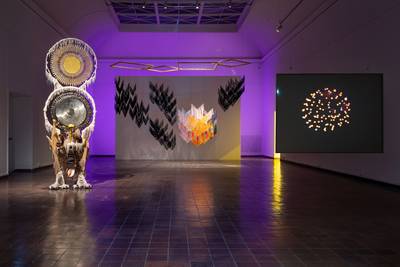

READ
Whose Dreams, Whose Futures?: A Review of GIBCA 2023
A mash of queer utopias, spacious installations, and celebratory poetics, the 12th edition of the Gothenburg International Biennial for contemporary art presents a site for speculation.


This text focuses on topics related to HB23’s thematic questions and experiments mediated by curator Joasia Krysa in the biennial and her partly experimental approach with curatorial collaborators. These are questions about how the mediation of art is inextricably linked with the possibility of political and environmental agency and awareness. They delve into the political and ecological environment of the Baltic Sea, its historical significance as potential material within the context of the Helsinki Biennial, and the kinds of geopolitical and historical questions that biennials might confront in the Baltic Sea area.
READBiennial in the Baltic Sea Region: Groans, Wishes, and Art Jargon
Is the success or failure of the HB23 biennial more appropriately judged by criteria such as the quality, quantity, and international relevance of the showcased works, or should the focus be on whether the biennial effectively addressed the specificity of its site or geopolitical location?


Both the general and the art communities in Latvia can be described as being fairly closed off to uncomfortable questions and even to the role of art in addressing ideologically and politically charged issues. For these reasons alone, Survival Kit must be considered not just another glamour art event but an event that seeks to radically redefine the role of art in the local cultural space.
READPerformances of Peace, Geometries of Friendships: A Review of Survival Kit 14
Survival Kit 14 focuses on the links between the Soviet Union and African cultural diplomacy and tries to broaden local perceptions of different forms of cultural interaction, as well as shed light on lesser-known pages of Eastern European history, dispel racist prejudices and see the seemingly “other” as an essential part of our common experience. In letting the exhibition’s subjects fully speak for themselves, it seems that the curators forgot to provide an interpretive translation, a crucial aspect of friendship between distant regions and nations.